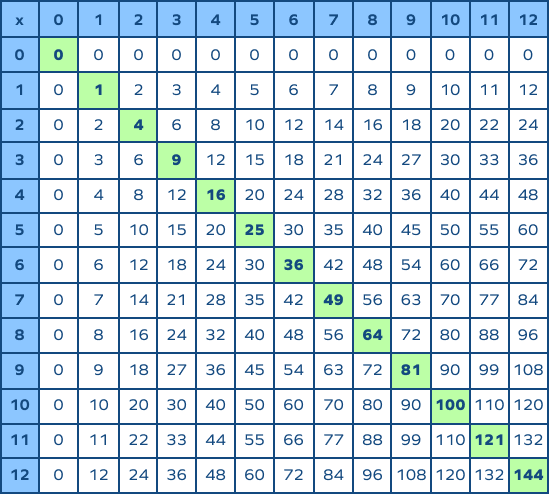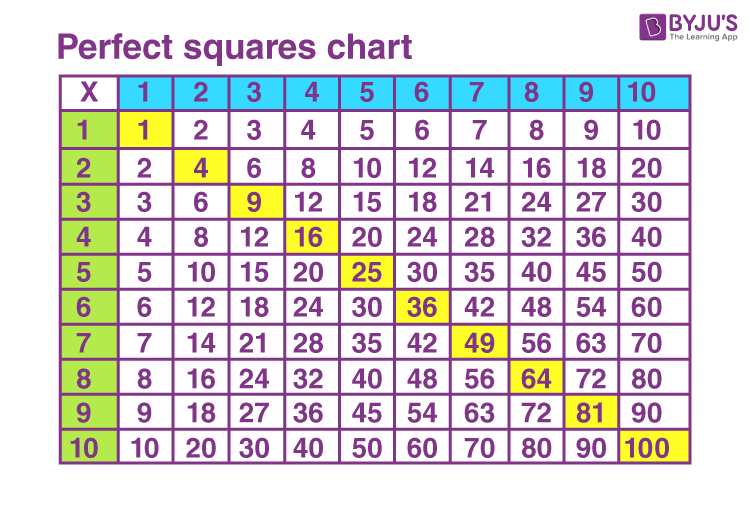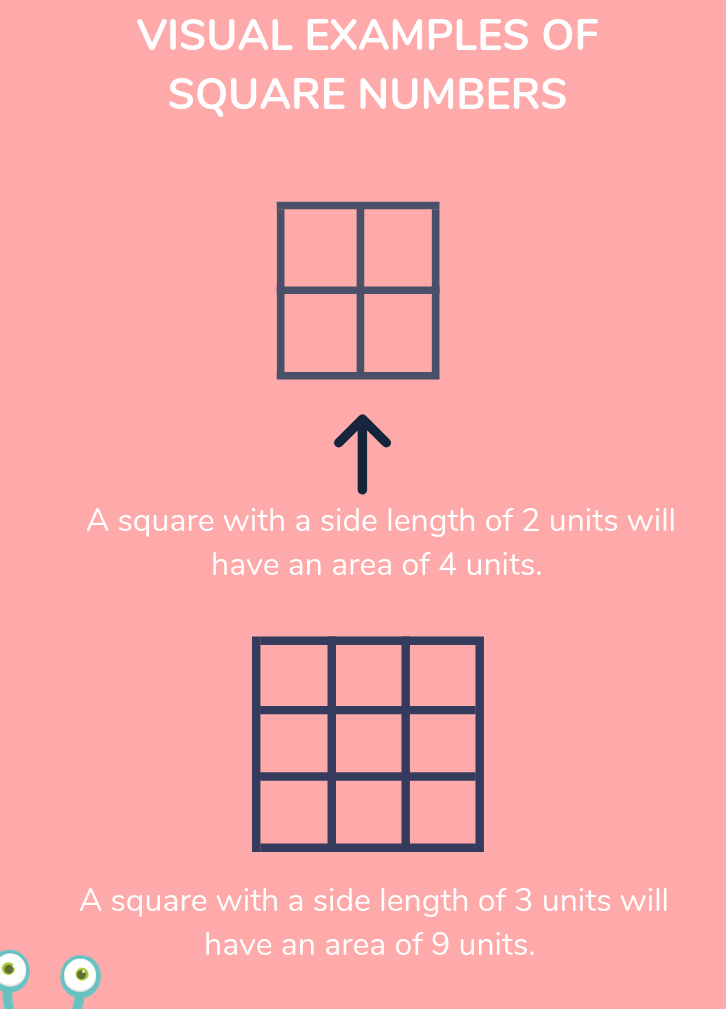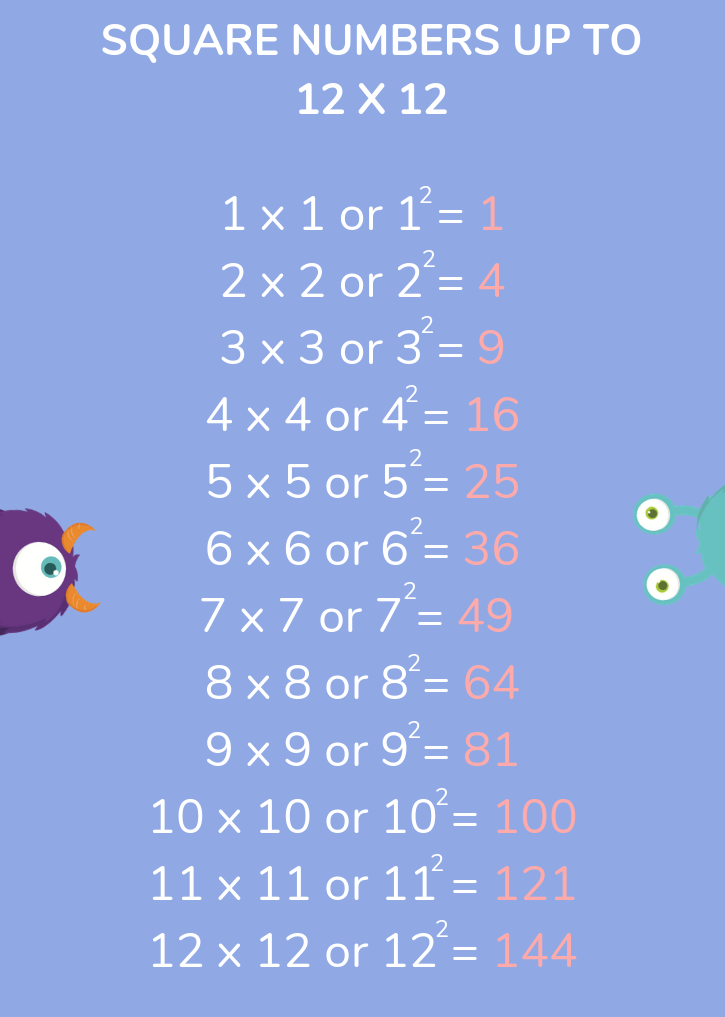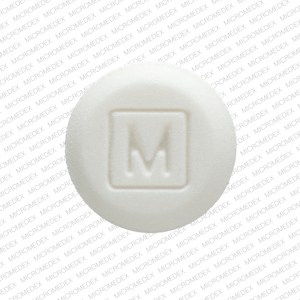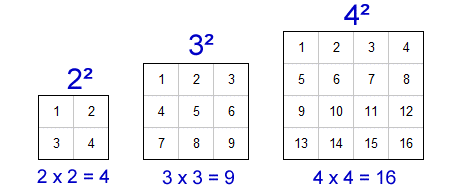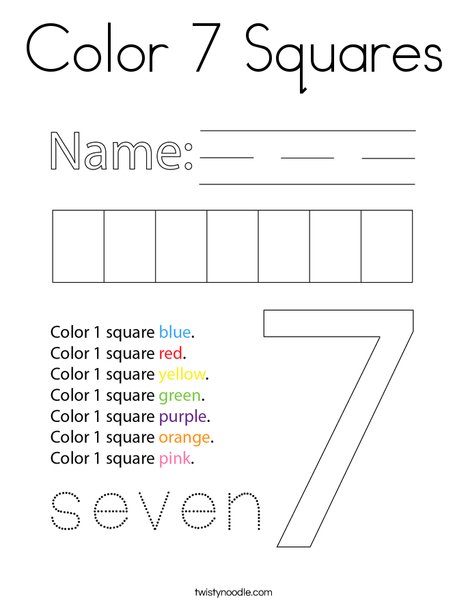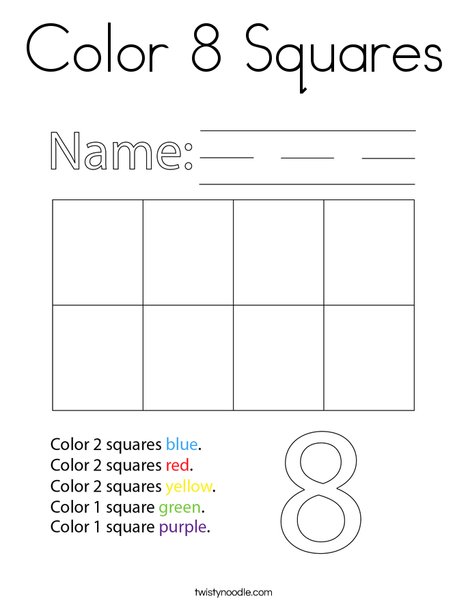Topic square root cube root worksheet: Discover the perfect resources for mastering square roots and cube roots with our engaging worksheets. Designed to simplify complex concepts, these worksheets provide practical exercises and real-world applications to help students excel in math. Ideal for both beginners and advanced learners, our materials make learning fun and interactive. Dive into the world of roots and enhance your mathematical skills today!
Table of Content
- Square Root and Cube Root Worksheet
- Introduction to Square Roots and Cube Roots
- Understanding the Basics
- Perfect Squares and Perfect Cubes
- Calculating Square Roots
- Calculating Cube Roots
- Identifying and Solving Problems Involving Roots
- Application in Real-World Scenarios
- Interactive and Engaging Worksheets
- Advanced Problem-Solving Techniques
- Practice Exercises and Solutions
- Printable and Downloadable Worksheets
- Resources for Teachers and Students
- Additional Learning Tools and Games
- FAQs on Square and Cube Roots
- Conclusion and Further Study
- YOUTUBE: Xem video 'Bình phương và căn bậc ba | Toán với thầy J' để học về các khái niệm căn bậc hai và căn bậc ba với giảng viên thú vị này.
Square Root and Cube Root Worksheet
Explore a variety of worksheets designed to help students understand and practice square roots and cube roots. These worksheets are ideal for reinforcing mathematical concepts related to roots and providing engaging practice activities.
Key Concepts
- Square Roots: The square root of a number \( n \) is a value \( x \) such that \( x^2 = n \).
- Cube Roots: The cube root of a number \( n \) is a value \( x \) such that \( x^3 = n \).
- Perfect Squares: Numbers like \( 1, 4, 9, 16 \), and \( 25 \) which are the squares of integers.
- Perfect Cubes: Numbers like \( 1, 8, 27, 64 \), and \( 125 \) which are the cubes of integers.
Types of Worksheets
- Basic Square and Cube Roots
Worksheets that cover the fundamental concepts and basic problems involving square and cube roots.
- Perfect Squares and Cubes
Worksheets focused on identifying and calculating the roots of perfect squares and perfect cubes.
- Application Problems
Practical problems that involve the use of square and cube roots in real-life scenarios and mathematical contexts.
- Interactive Activities
Engaging activities designed to help students explore the concepts of square and cube roots interactively.
Sample Problems
| Problem | Solution |
|---|---|
| Find the square root of \( 81 \). | \( \sqrt{81} = 9 \) |
| Find the cube root of \( 27 \). | \( \sqrt[3]{27} = 3 \) |
| Determine if \( 64 \) is a perfect square or a perfect cube. | \( 64 = 8^2 \) and \( 64 = 4^3 \), so it is both a perfect square and a perfect cube. |
Worksheet Examples
- - A collection of problems to practice finding the square roots of various numbers.
- - Problems designed to test your understanding of cube roots and related concepts.
- - Engage with square and cube root problems in an interactive format.
Why Practice Roots?
Understanding square roots and cube roots is crucial for building a strong foundation in mathematics. These concepts are widely used in various areas of math, including algebra, geometry, and higher-level math courses. Regular practice with worksheets helps solidify these concepts, making it easier to solve more complex problems in the future.
Downloadable Resources
Click on the links below to download free worksheets and resources:
Additional Learning Tools
- Interactive Calculators: Use online calculators to check your answers and understand the calculation process.
- Math Games: Engage with educational games that make learning roots fun and interactive.
- Tutorial Videos: Watch video tutorials that explain the concepts of square and cube roots step-by-step.
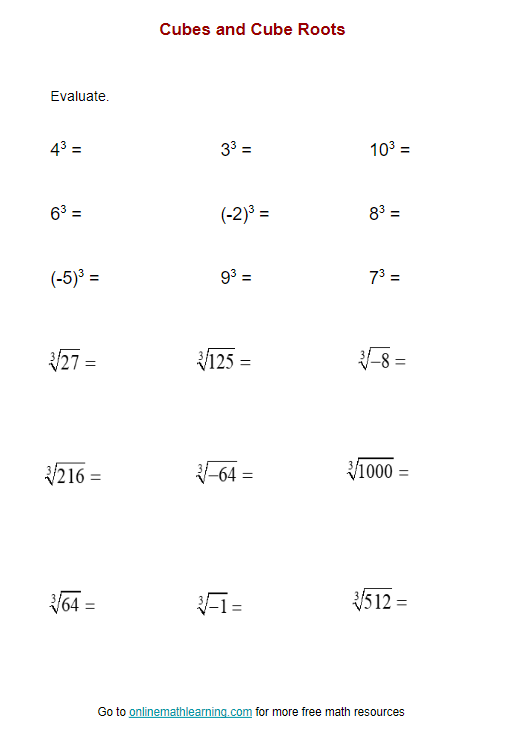
READ MORE:
Introduction to Square Roots and Cube Roots
Square roots and cube roots are fundamental concepts in mathematics, essential for understanding higher-level math topics and real-world applications. The square root of a number \(x\) is a value that, when multiplied by itself, gives \(x\). For example, the square root of 25 is 5, because \(5 \times 5 = 25\). This is denoted as \(\sqrt{25} = 5\).
Similarly, the cube root of a number \(y\) is a value that, when used in a multiplication three times, gives \(y\). For example, the cube root of 27 is 3, because \(3 \times 3 \times 3 = 27\). This is denoted as \(\sqrt[3]{27} = 3\).
Understanding these roots is crucial for solving equations, simplifying expressions, and analyzing geometric shapes. Below are some key points and methods for calculating square and cube roots:
- Perfect Squares and Cubes: Numbers like 1, 4, 9, 16, and 25 are perfect squares, while 1, 8, 27, and 64 are perfect cubes.
- Using a Calculator: Most calculators have dedicated buttons for square roots (\(\sqrt{}\)) and cube roots (\(\sqrt[3]{}\)). Simply input the number and press the appropriate button.
- Prime Factorization: For manual calculation, break down the number into its prime factors. Group the factors into pairs for square roots and triplets for cube roots, then multiply one factor from each group.
- Estimation: Round the number to the nearest perfect square or cube and use the known roots as a basis for estimation.
These methods can help you efficiently find roots and apply them in various mathematical problems. With practice, identifying and calculating roots becomes a straightforward task.
Understanding the Basics
Square roots and cube roots are fundamental mathematical concepts that help in simplifying expressions and solving equations. Let's explore these concepts step-by-step.
Square Roots
A square root of a number is a value that, when multiplied by itself, gives the original number. It is represented by the radical symbol (√). For example:
- The square root of 25 is 5 because \(5 \times 5 = 25\).
- The square root of 36 is 6 because \(6 \times 6 = 36\).
Some properties of square roots include:
- Every positive number has two square roots: one positive and one negative. For example, the square roots of 9 are 3 and -3.
- The square root of zero is zero.
- Negative numbers do not have real square roots because a negative number cannot be obtained by multiplying a real number by itself.
Cube Roots
A cube root of a number is a value that, when multiplied by itself three times, gives the original number. It is represented by the radical symbol with an index of 3 (∛). For example:
- The cube root of 27 is 3 because \(3 \times 3 \times 3 = 27\).
- The cube root of 64 is 4 because \(4 \times 4 \times 4 = 64\).
Some properties of cube roots include:
- Every real number has exactly one real cube root.
- The cube root of zero is zero.
- Negative numbers have negative cube roots. For example, the cube root of -27 is -3 because \(-3 \times -3 \times -3 = -27\).
Calculating Square and Cube Roots
There are several methods to calculate square and cube roots, including:
- Using a Calculator: Most scientific calculators have dedicated buttons for square and cube roots.
- Prime Factorization Method: This involves breaking down a number into its prime factors and grouping them to find the root.
- Estimation Method: This involves approximating the root by rounding the number to the nearest perfect square or cube.
Examples
Let's look at some examples to understand these methods better:
| Number | Square Root | Cube Root |
|---|---|---|
| 25 | 5 | - |
| 64 | 8 | 4 |
| 27 | - | 3 |
| 16 | 4 | - |
| 8 | - | 2 |
Practice Problems
Try solving these problems to practice your understanding of square and cube roots:
- Find the square root of 144.
- Calculate the cube root of 125.
- Determine the square root of 81.
- What is the cube root of 216?
Understanding these basic concepts of square and cube roots will help you solve more complex mathematical problems and apply these skills in real-world scenarios.
Perfect Squares and Perfect Cubes
Understanding perfect squares and perfect cubes is fundamental in mastering the concepts of square roots and cube roots. Let's explore these concepts in detail:
Perfect Squares
A perfect square is a number that can be expressed as the product of an integer with itself. For example:
- \(1 = 1 \times 1\)
- \(4 = 2 \times 2\)
- \(9 = 3 \times 3\)
- \(16 = 4 \times 4\)
- \(25 = 5 \times 5\)
- \(36 = 6 \times 6\)
- \(49 = 7 \times 7\)
- \(64 = 8 \times 8\)
- \(81 = 9 \times 9\)
- \(100 = 10 \times 10\)
To find the square root of a perfect square, you need to determine which integer, when multiplied by itself, equals the given number. For instance, the square root of 25 is 5 because \(5 \times 5 = 25\).
Perfect Cubes
A perfect cube is a number that can be expressed as the product of an integer with itself three times. For example:
- \(1 = 1 \times 1 \times 1\)
- \(8 = 2 \times 2 \times 2\)
- \(27 = 3 \times 3 \times 3\)
- \(64 = 4 \times 4 \times 4\)
- \(125 = 5 \times 5 \times 5\)
- \(216 = 6 \times 6 \times 6\)
- \(343 = 7 \times 7 \times 7\)
- \(512 = 8 \times 8 \times 8\)
- \(729 = 9 \times 9 \times 9\)
- \(1000 = 10 \times 10 \times 10\)
To find the cube root of a perfect cube, you need to determine which integer, when multiplied by itself three times, equals the given number. For instance, the cube root of 64 is 4 because \(4 \times 4 \times 4 = 64\).
Applications
Perfect squares and perfect cubes are not just theoretical concepts; they have practical applications in various fields such as engineering, physics, and computer science. Understanding these concepts can also help in solving more complex mathematical problems involving exponents and roots.
Practice Problems
Here are some practice problems to help you solidify your understanding:
- Find the square root of 144.
- Find the cube root of 343.
- Determine if 121 is a perfect square.
- Determine if 125 is a perfect cube.
Practice these problems and check your answers to enhance your skills in identifying and working with perfect squares and perfect cubes.
Calculating Square Roots
Calculating square roots can be approached through various methods, each providing a different level of understanding and accuracy. Here are some common methods:
- Using a Calculator:
- Enter the number you want to find the square root of.
- Press the square root (√) button.
- The calculator will display the square root of the number.
- Prime Factorization Method:
- Write down the number you want to find the square root of.
- Find the prime factors of the number.
- Group the prime factors into pairs.
- Take one factor from each pair and multiply them together to get the square root.
- Example: To find the square root of 36:
- Prime factors of 36: 2 × 2 × 3 × 3
- Grouped into pairs: (2 × 2) and (3 × 3)
- Square root: 2 × 3 = 6
- Estimation Method:
- Identify the perfect squares between which your number lies.
- Estimate the square root by determining which perfect square your number is closer to.
- Adjust your estimate by using fractional values if necessary.
- Example: To estimate the square root of 20:
- 20 is between 16 (4²) and 25 (5²).
- It is closer to 16, so estimate a value slightly above 4.
- Refine the estimate: 4.5² = 20.25, so the square root of 20 is approximately 4.5.
- Long Division Method:
- Group the digits of the number in pairs, starting from the decimal point.
- Find the largest number whose square is less than or equal to the first group. Write this number above the first group.
- Subtract the square of this number from the first group and bring down the next pair of digits.
- Double the number above the line and find a digit to complete it, such that when multiplied by the new digit, it is less than or equal to the current dividend.
- Repeat the process until you reach the desired precision.
- Example: To find the square root of 529:
- Pair the digits: 5 | 29
- 5 is the largest square less than 5 (2² = 4), so write 2 above.
- Subtract: 5 - 4 = 1, bring down 29 → 129
- Double 2 (4), find a digit to complete 40x ≤ 129 (3 works: 43 × 3 = 129)
- The square root of 529 is 23.
These methods provide different levels of accuracy and understanding. Using a calculator is quick and convenient, while the prime factorization and estimation methods help build a deeper understanding of the concept of square roots. The long division method, although more complex, offers a precise manual approach to finding square roots.

Calculating Cube Roots
Calculating cube roots can be done using various methods. Here are three commonly used methods to find the cube root of a number:
Method 1: Using a Calculator
- Enter the number you want to find the cube root of on your calculator.
- Press the cube root button (∛). The result displayed will be the cube root of the number.
Method 2: Prime Factorization Method
This method involves finding the prime factors of the number and grouping them in sets of three.
- Write the number whose cube root you want to find.
- Find the prime factors of the number.
- Group the prime factors in sets of three.
- Take one factor from each group and multiply them together to get the cube root.
Example:
- Find the cube root of 216.
- Prime factors of 216: 2 x 2 x 2 x 3 x 3 x 3.
- Group the factors: (2 x 2 x 2) and (3 x 3 x 3).
- Cube root: 2 x 3 = 6.
- Therefore, ∛216 = 6.
Method 3: Estimation Method
This method involves estimating the cube root by rounding the number to the nearest perfect cube.
- Round the number to the nearest perfect cube.
- Find the cube root of the perfect cube using a calculator or the prime factorization method.
- Adjust the result using the estimation.
Example:
- Find the cube root of 37.
- Round 37 to the nearest perfect cube, which is 27.
- The cube root of 27 is 3.
- Estimate: 37 is slightly more than 27, so the cube root of 37 will be slightly more than 3.
- Therefore, ∛37 is approximately 3.3.
Additional Practice
Here are some additional problems to practice calculating cube roots:
- Find the cube root of 64.
- Find the cube root of 125.
- Estimate the cube root of 50.
By practicing these methods, you can improve your skills in calculating cube roots effectively.
Identifying and Solving Problems Involving Roots
Understanding and solving problems involving square roots and cube roots requires a systematic approach. Below are detailed methods and steps to help identify and solve these problems effectively.
Identifying Square Roots and Cube Roots
To identify the square root or cube root of a number, follow these steps:
- Square Roots: Look for a number that, when multiplied by itself, gives the original number. For example, the square root of 25 is 5 because \(5 \times 5 = 25\).
- Cube Roots: Find a number that, when used in a multiplication three times, results in the original number. For example, the cube root of 27 is 3 because \(3 \times 3 \times 3 = 27\).
Solving Problems Involving Square Roots
Here are some methods to solve problems involving square roots:
- Prime Factorization Method: Factorize the number into its prime factors and group them in pairs. The product of one number from each pair is the square root.
- Estimation Method: Estimate the square root by finding the nearest perfect squares and then refine the result using averaging.
- Using a Calculator: Enter the number and use the square root function to find the result directly.
Solving Problems Involving Cube Roots
Here are some methods to solve problems involving cube roots:
- Prime Factorization Method: Factorize the number into its prime factors and group them in sets of three. The product of one number from each group is the cube root.
- Estimation Method: Estimate the cube root by rounding the number to the nearest perfect cube and then adjust the result using estimation techniques.
- Using a Calculator: Enter the number and use the cube root function to find the result directly.
Example Problems
Let's solve some example problems to illustrate these methods:
Example 1: Finding the Square Root Using Prime Factorization
Find the square root of 144.
- Prime factorize 144: \(144 = 2 \times 2 \times 2 \times 2 \times 3 \times 3\).
- Group the factors in pairs: \((2 \times 2) \times (2 \times 2) \times (3 \times 3)\).
- Take one factor from each pair: \(2 \times 2 \times 3 = 12\).
- Thus, the square root of 144 is 12.
Example 2: Finding the Cube Root Using Prime Factorization
Find the cube root of 216.
- Prime factorize 216: \(216 = 2 \times 2 \times 2 \times 3 \times 3 \times 3\).
- Group the factors in sets of three: \((2 \times 2 \times 2) \times (3 \times 3 \times 3)\).
- Take one factor from each set: \(2 \times 3 = 6\).
- Thus, the cube root of 216 is 6.
Example 3: Estimating the Cube Root
Estimate the cube root of 50.
- Find the nearest perfect cubes: 27 (cube root 3) and 64 (cube root 4).
- Estimate between 3 and 4. Since 50 is closer to 64, approximate it to 3.7.
Practice Exercises
Try solving these problems on your own:
- Find the square root of 225 using the prime factorization method.
- Estimate the cube root of 80.
- Solve for the square root of 169 using a calculator.
- Determine the cube root of 512 by prime factorization.
Conclusion
Practicing these methods will help you become proficient in identifying and solving problems involving square roots and cube roots. Use the worksheets and exercises to reinforce your understanding and improve your problem-solving skills.
Application in Real-World Scenarios
Understanding square roots and cube roots is essential not only in academic contexts but also in various real-world applications. Here are some scenarios where these mathematical concepts are applied:
- Architecture and Construction:
Architects and builders use square roots and cube roots to calculate areas and volumes, ensuring structures are safe and stable. For instance, to determine the length of a side of a square room given the area, the square root is used.
Example: If a square room has an area of 144 square feet, the length of each side is calculated as \( \sqrt{144} = 12 \) feet.
- Physics and Engineering:
In physics, the concepts of square and cube roots are used to solve problems related to motion, energy, and waves. Engineers use these calculations to design and test equipment.
Example: To determine the volume of a cube-shaped object given its side length, the cube root is used. If the volume of the object is 64 cubic units, the side length is \( \sqrt[3]{64} = 4 \) units.
- Finance:
Financial analysts use square roots to calculate volatility and standard deviation in stock prices, helping to assess investment risks.
Example: In compound interest calculations, the nth root is used to find the annual growth rate. If an investment grows from $1,000 to $8,000 over 3 years, the annual growth rate is \( \sqrt[3]{8,000 / 1,000} = 2 \), meaning the investment doubles each year.
- Computer Graphics:
Square roots are utilized in computer graphics to calculate distances between points, which is fundamental for rendering images and animations accurately.
Example: To find the distance between two points \((x_1, y_1)\) and \((x_2, y_2)\) in a plane, the distance formula \( \sqrt{(x_2 - x_1)^2 + (y_2 - y_1)^2} \) involves square roots.
- Environmental Science:
Cube roots are used in environmental science to model the distribution of pollutants in the atmosphere or water bodies, helping to predict and mitigate environmental impacts.
Example: To estimate the spread of a pollutant released in a cubic container, if the volume is known, the side length can be determined using the cube root.
By integrating square roots and cube roots into practical applications, students can see the relevance of these mathematical concepts in their daily lives and future careers.
Interactive and Engaging Worksheets
Interactive and engaging worksheets are essential tools for making the learning of square roots and cube roots both fun and effective. These worksheets can help students grasp these concepts through various engaging methods and activities. Here are some interactive elements to include in your worksheets:
- Visual Aids:
Incorporate visual aids such as number lines, grids, and geometric shapes to help students visualize the concepts of square roots and cube roots.
- Interactive Exercises:
- Use digital platforms that allow students to input their answers and receive instant feedback. This helps in reinforcing learning and correcting mistakes on the spot.
- Include drag-and-drop activities where students match numbers with their corresponding square or cube roots.
- Games and Puzzles:
Integrate educational games and puzzles that challenge students to find square and cube roots. These can include crosswords, Sudoku-like puzzles, and matching games.
- Real-World Problems:
Present problems that involve real-world scenarios where students need to apply their knowledge of square roots and cube roots. This contextual learning helps in understanding the practical application of these concepts.
- Step-by-Step Problem Solving:
Provide worksheets with step-by-step problem-solving guides. For instance, break down complex problems into simpler steps, guiding students through the process of finding square and cube roots.
- Group Activities:
Design activities that require collaboration among students. Group work encourages discussion and deeper understanding. For example, group students to solve a set of problems and then present their solutions.
Sample Problems and Activities
| Activity | Description |
|---|---|
| Square Root Hunt | Students find and mark the square roots of numbers hidden in a grid. |
| Cube Root Matching | Match numbers with their cube roots using a set of cards. |
| Interactive Quizzes | Online quizzes that provide immediate feedback on square root and cube root problems. |
By incorporating these interactive and engaging methods into worksheets, students are more likely to enjoy learning and develop a deeper understanding of square roots and cube roots.
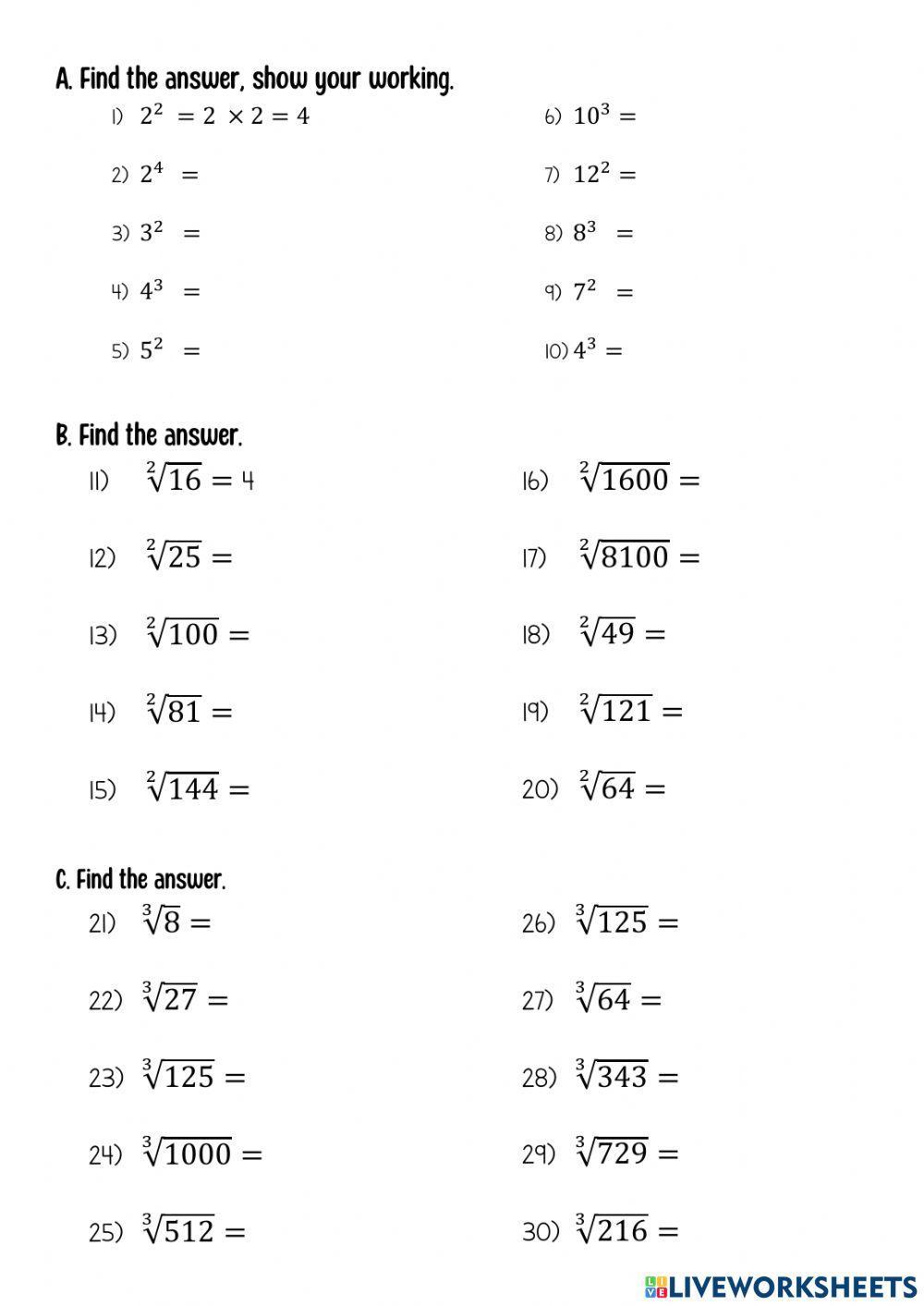
Advanced Problem-Solving Techniques
Mastering square roots and cube roots is essential for tackling more complex mathematical problems. Below are advanced problem-solving techniques to help you solve challenging problems involving roots.
1. Simplifying Radicals
Simplifying radicals is a crucial skill. To simplify a square root or cube root, follow these steps:
- Factor the number under the root into its prime factors.
- Group the prime factors in pairs for square roots or in triples for cube roots.
- Move each pair (or triple) of factors outside the root.
Example:
\\(\sqrt{72} = \sqrt{2 \cdot 2 \cdot 2 \cdot 3 \cdot 3} = 6\sqrt{2}\\)
2. Rationalizing the Denominator
When you encounter a fraction with a square root or cube root in the denominator, you can rationalize it by multiplying the numerator and denominator by the appropriate root.
Example:
\\(\frac{5}{\sqrt{3}} \cdot \frac{\sqrt{3}}{\sqrt{3}} = \frac{5\sqrt{3}}{3}\\)
3. Solving Radical Equations
To solve equations involving square or cube roots, isolate the radical on one side of the equation and then square or cube both sides to eliminate the root.
Example:
\\(\sqrt{x + 3} = 5\\)
- Square both sides: \\((\sqrt{x + 3})^2 = 5^2\\)
- Simplify: \\(x + 3 = 25\\)
- Solve for \\(x\\): \\(x = 22\\)
4. Using the Conjugate
For expressions involving sums or differences of square roots, multiply by the conjugate to simplify.
Example:
\\(\frac{1}{\sqrt{2} + 1} \cdot \frac{\sqrt{2} - 1}{\sqrt{2} - 1} = \frac{\sqrt{2} - 1}{1} = \sqrt{2} - 1\\)
5. Applying Properties of Exponents
Remember that roots can be expressed as fractional exponents. This can simplify many problems.
Example:
\\(\sqrt[3]{x^4} = x^{4/3}\\)
Practice Problems
- Simplify \\(\sqrt{50}\\)
- Rationalize \\(\frac{4}{\sqrt{5}}\\)
- Solve \\(\sqrt{x + 7} = 3\\)
- Use the conjugate to simplify \\(\frac{1}{\sqrt{3} - 1}\\)
- Simplify \\(\sqrt[3]{8x^6}\\)
These techniques will help you handle complex problems involving square and cube roots with confidence and accuracy.
Practice Exercises and Solutions
To effectively master square roots and cube roots, consistent practice is essential. Below are a series of exercises designed to strengthen your understanding and application of these concepts. Detailed solutions are provided to aid in self-assessment and learning.
Square Roots Exercises
- Find the square root of the following perfect squares:
- \(\sqrt{16}\)
- \(\sqrt{81}\)
- \(\sqrt{144}\)
- Simplify the following expressions:
- \(\sqrt{50}\)
- \(\sqrt{98}\)
- \(\sqrt{200}\)
- Calculate the square root of the following non-perfect squares to two decimal places:
- \(\sqrt{20}\)
- \(\sqrt{45}\)
- \(\sqrt{70}\)
Cube Roots Exercises
- Find the cube root of the following perfect cubes:
- \(\sqrt[3]{27}\)
- \(\sqrt[3]{125}\)
- \(\sqrt[3]{343}\)
- Simplify the following expressions:
- \(\sqrt[3]{216}\)
- \(\sqrt[3]{512}\)
- \(\sqrt[3]{1000}\)
- Calculate the cube root of the following non-perfect cubes to two decimal places:
- \(\sqrt[3]{20}\)
- \(\sqrt[3]{75}\)
- \(\sqrt[3]{150}\)
Solutions
| Exercise | Solution |
|---|---|
| \(\sqrt{16}\) | 4 |
| \(\sqrt{81}\) | 9 |
| \(\sqrt{144}\) | 12 |
| \(\sqrt{50}\) | \(5\sqrt{2}\) |
| \(\sqrt{98}\) | \(7\sqrt{2}\) |
| \(\sqrt{200}\) | \(10\sqrt{2}\) |
| \(\sqrt{20}\) | 4.47 |
| \(\sqrt{45}\) | 6.71 |
| \(\sqrt{70}\) | 8.37 |
| \(\sqrt[3]{27}\) | 3 |
| \(\sqrt[3]{125}\) | 5 |
| \(\sqrt[3]{343}\) | 7 |
| \(\sqrt[3]{216}\) | 6 |
| \(\sqrt[3]{512}\) | 8 |
| \(\sqrt[3]{1000}\) | 10 |
| \(\sqrt[3]{20}\) | 2.72 |
| \(\sqrt[3]{75}\) | 4.23 |
| \(\sqrt[3]{150}\) | 5.31 |
Practicing these exercises will help solidify your understanding of square roots and cube roots, ensuring you are well-prepared for more advanced mathematical concepts and real-world applications.
Printable and Downloadable Worksheets
Printable and downloadable worksheets are a fantastic resource for reinforcing the concepts of square roots and cube roots. These worksheets are designed to provide comprehensive practice and can be used in classrooms, homeschooling environments, or for individual study. Here are some features and types of worksheets you can find:
- Comprehensive Practice: Worksheets cover a range of problems from basic to advanced, ensuring students of all levels can benefit.
- Step-by-Step Solutions: Many worksheets come with detailed solutions, helping students understand the process of finding square roots and cube roots.
- Variety of Problems: Worksheets include a mix of numerical problems, word problems, and application-based questions.
Types of Worksheets
Here are some common types of printable and downloadable worksheets available:
- Basic Square Root and Cube Root Problems:
- Find the square root of perfect squares (e.g., √49).
- Find the cube root of perfect cubes (e.g., ∛64).
- Intermediate Problems:
- Calculate square roots of non-perfect squares to two decimal places.
- Calculate cube roots of non-perfect cubes to two decimal places.
- Advanced Problems:
- Solving equations involving square roots and cube roots (e.g., solving for x in equations like x² = 49).
- Word problems that apply square and cube roots to real-world scenarios.
- Mixed Practice: Worksheets that combine both square root and cube root problems to challenge students.
How to Use These Worksheets
Using these worksheets effectively can help students master the concepts of square roots and cube roots. Here are some tips:
- Start with Basic Problems: Begin with simpler problems to build a strong foundation.
- Gradually Increase Difficulty: Move on to more complex problems as the student becomes more confident.
- Review and Discuss Solutions: Go over the solutions together to ensure understanding and address any mistakes.
- Incorporate Word Problems: Apply the concepts to real-world scenarios to enhance comprehension.
Downloading and Printing
Many websites offer printable and downloadable worksheets in PDF format. These worksheets can be easily printed for use in various educational settings. Here are some steps to download and print these worksheets:
- Find a Reliable Source: Use educational websites like Math-Drills.com or MathWorksheetsLand.com.
- Choose the Appropriate Worksheet: Select worksheets that match the student's current learning level.
- Download the PDF: Click on the download link to save the worksheet to your device.
- Print the Worksheet: Use a printer to get a hard copy of the worksheet for practice.
By utilizing printable and downloadable worksheets, students can practice and reinforce their understanding of square roots and cube roots effectively, paving the way for greater mathematical proficiency.
Resources for Teachers and Students
Accessing high-quality resources can significantly enhance the learning experience for both teachers and students. Here are some valuable resources that can aid in teaching and understanding square roots and cube roots:
- Interactive Worksheets: Utilize online platforms that offer interactive worksheets. These worksheets often include auto-grading features, which help students get immediate feedback on their answers. For example, Live Worksheets provides a variety of interactive exercises on square roots and cube roots that are engaging and user-friendly.
- Comprehensive Lesson Plans: Teachers can benefit from detailed lesson plans that cover the concepts of square roots and cube roots extensively. The Oak National Academy offers structured lesson plans complete with video tutorials, downloadable worksheets, and quizzes to test students' understanding.
- PowerPoint Resources: Integrate visually appealing PowerPoint presentations into your lessons to keep students engaged. Websites like Tes provide PowerPoint resources with practice questions on square and cube roots, complete with answers. These are perfect for classroom activities and homework assignments.
- Printable Worksheets: For offline learning, printable worksheets are a great resource. Teachers can find worksheets that include a range of problems from basic to advanced levels. These can be used for in-class exercises or as homework to reinforce learning.
- Educational Games and Apps: Incorporate educational games and apps that make learning fun. Many platforms offer interactive games focused on mathematical concepts, including square roots and cube roots, which can help students practice in a more engaging way.
By leveraging these resources, teachers can create a dynamic and supportive learning environment, and students can gain a deeper understanding of square roots and cube roots through varied and interactive methods.

Additional Learning Tools and Games
Engaging students in learning square and cube roots can be made fun and interactive through various online tools and games. Here are some effective tools and games to enhance understanding and practice of these concepts:
- Pyramid Math 2: This game helps students practice calculating square roots. Players select the correct marble that represents the square root of a given number and place it in a jar. This game not only reinforces mathematical concepts but also enhances coordination and fine motor skills.
- MathPup Hook Square Root: In this game, players control a moving ball to hit the correct answer bubble for displayed square root questions. It improves fine motor skills and hand-eye coordination while providing valuable square root practice.
- Simplifying Square Roots: Designed for middle school students, this game focuses on simplifying irrational square roots (surds). It helps students understand and simplify complex square roots, enhancing their problem-solving skills.
- Mathmammoth Square Root Game: A customizable game that allows students to solve up to 30 square root questions, providing instant feedback and helping to build speed and accuracy in calculations.
- Quia – Concentration Square Root Game: This memory-based game involves matching pairs of numbers and their square roots. It improves recall capacity and concentration, making learning more engaging.
- Matching Game – Square Roots: Players match numbers with their square roots to fill a grid. This game encourages quick thinking and accuracy, with the added motivation of uncovering a final grid design.
- Square Roots Spin the Wheel Game: Players spin a wheel to determine their score and then answer square root questions from multiple choices. This game adds a fun and competitive element to learning.
- Cube Roots of Perfect Cubes: This game focuses on evaluating the cube roots of perfect cubes. It is an excellent resource for students to practice and master the calculation of cube roots.
These tools and games are designed to make learning square and cube roots an engaging and interactive experience. By incorporating these resources into study routines, students can enhance their understanding and enjoy the process of learning mathematics.
FAQs on Square and Cube Roots
Understanding square and cube roots can be challenging, so here are some frequently asked questions to help clarify common doubts:
-
What is the square root of a number?
The square root of a number is a value that, when multiplied by itself, gives the original number. For example, the square root of 25 is 5, because \(5 \times 5 = 25\).
-
What is the cube root of a number?
The cube root of a number is a value that, when multiplied by itself twice (cubed), gives the original number. For example, the cube root of 27 is 3, because \(3 \times 3 \times 3 = 27\).
-
Can every number have a square root?
Every non-negative number has a real square root. Negative numbers have complex square roots. For example, the square root of -1 is \(i\), where \(i\) is the imaginary unit.
-
Can every number have a cube root?
Yes, every real number has a unique real cube root. For example, the cube root of -8 is -2 because \(-2 \times -2 \times -2 = -8\).
-
How do you calculate square roots and cube roots without a calculator?
Square roots can be calculated using methods such as prime factorization, approximation, or the long division method. Cube roots can be calculated using similar methods, including the use of tables for approximation.
-
What is the relationship between square roots and cube roots?
Square roots find the number that, when multiplied by itself, gives the original number, whereas cube roots find the number that, when multiplied by itself twice (cubed), gives the original number. They are both forms of radicals but with different indices.
-
How can I simplify a square root or a cube root?
To simplify a square root, factor the number into its prime factors and pair the factors. For cube roots, group the prime factors into triplets. For example, to simplify \(\sqrt{72}\), you factor it as \( \sqrt{36 \times 2} = 6\sqrt{2} \). For cube roots, \(\sqrt[3]{24}\) can be factored as \(\sqrt[3]{8 \times 3} = 2\sqrt[3]{3} \).
-
How are square roots and cube roots used in real life?
Square roots are used in various applications such as calculating areas and understanding the properties of geometric shapes. Cube roots are often used in volume calculations and in fields like engineering and physics.
Conclusion and Further Study
Congratulations on completing this comprehensive guide to square roots and cube roots! By now, you should have a solid understanding of the concepts, properties, and applications of square roots and cube roots.
To further reinforce your learning, consider exploring additional resources such as:
- Practice worksheets and exercises available online or in textbooks.
- Interactive tools and games designed to enhance your problem-solving skills.
- Video tutorials or online courses covering advanced topics related to roots and exponents.
- Engage in peer discussions or join study groups to exchange ideas and strategies for tackling root-related problems.
Remember, mastering square roots and cube roots can greatly benefit your mathematical proficiency and problem-solving abilities. Keep practicing and exploring, and you'll continue to grow as a mathematician!
Xem video 'Bình phương và căn bậc ba | Toán với thầy J' để học về các khái niệm căn bậc hai và căn bậc ba với giảng viên thú vị này.
Bình phương và căn bậc ba | Toán với thầy J
READ MORE:
Xem video 'Toán học Hấp dẫn - Lũy thừa và Căn bậc hai' để hiểu rõ về các khái niệm lũy thừa và căn bậc hai thông qua giảng dạy sinh động và hấp dẫn.
Toán học Hấp dẫn - Lũy thừa và Căn bậc hai
